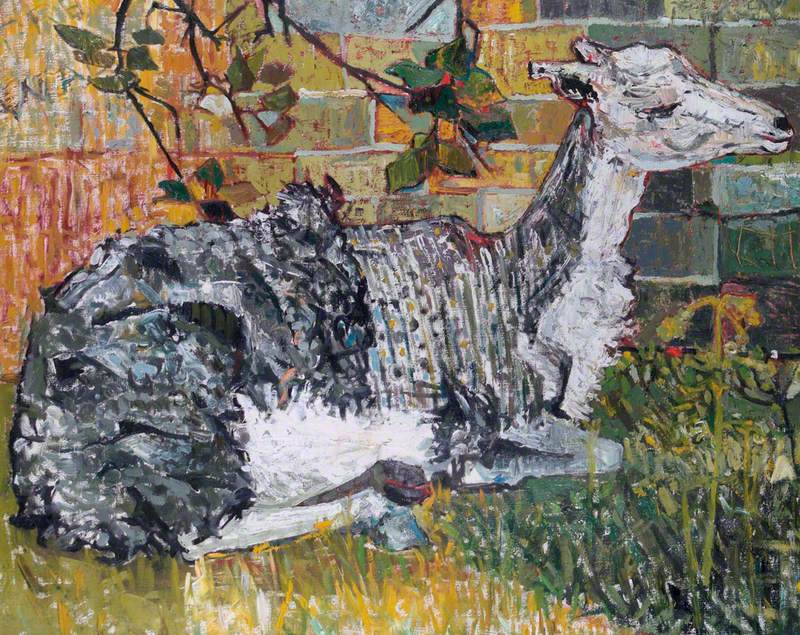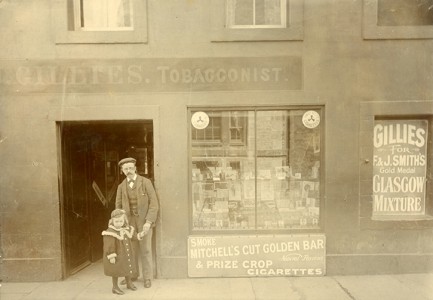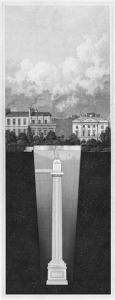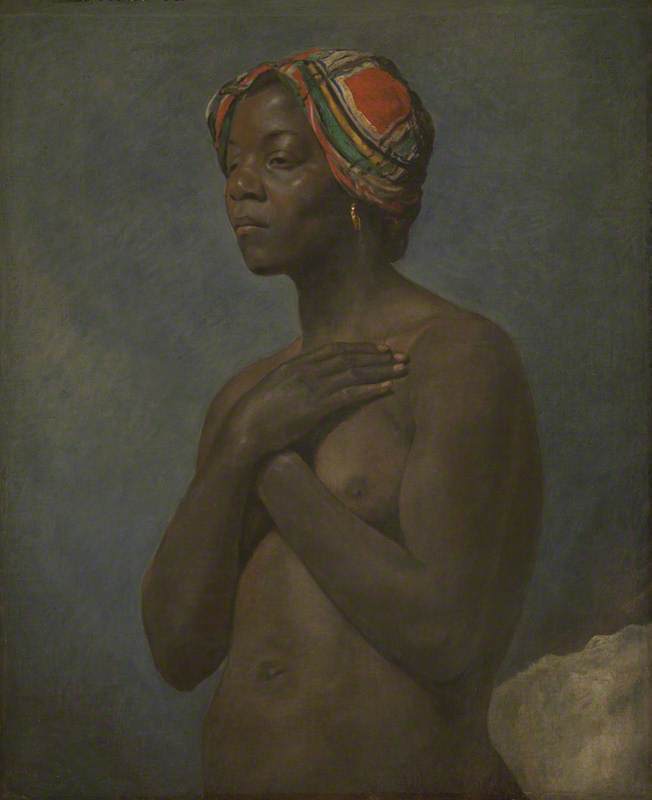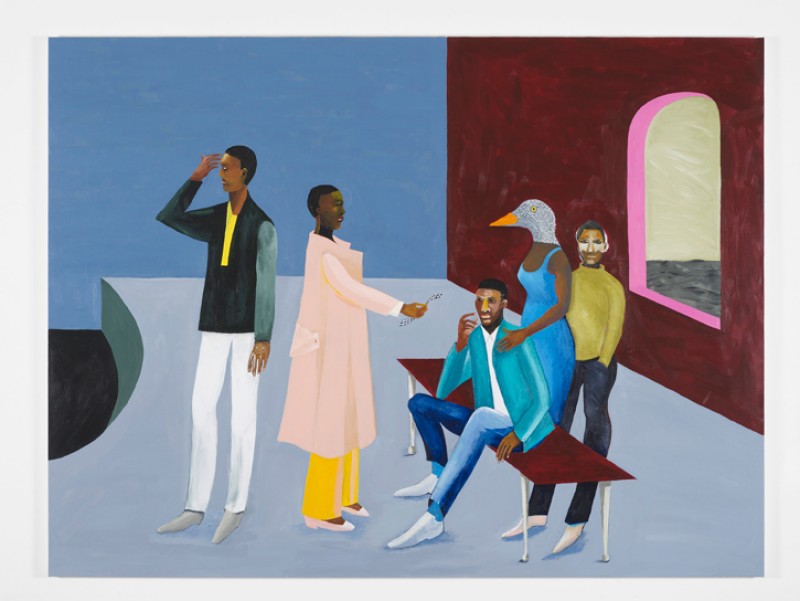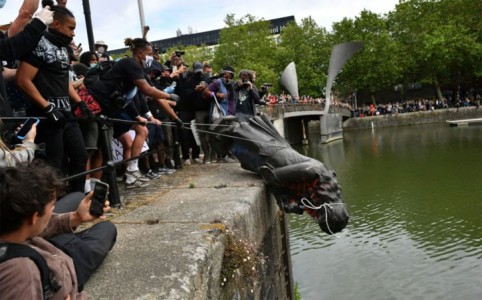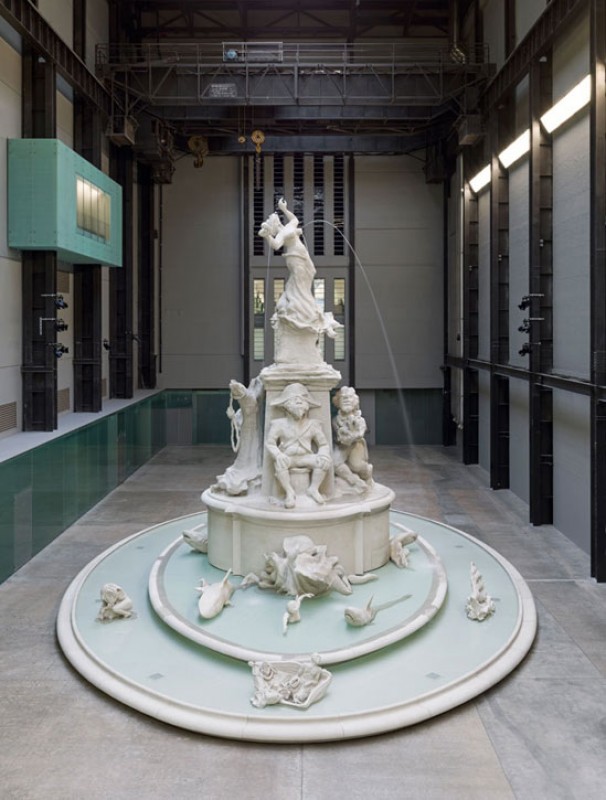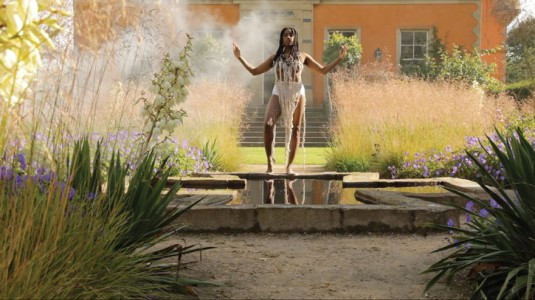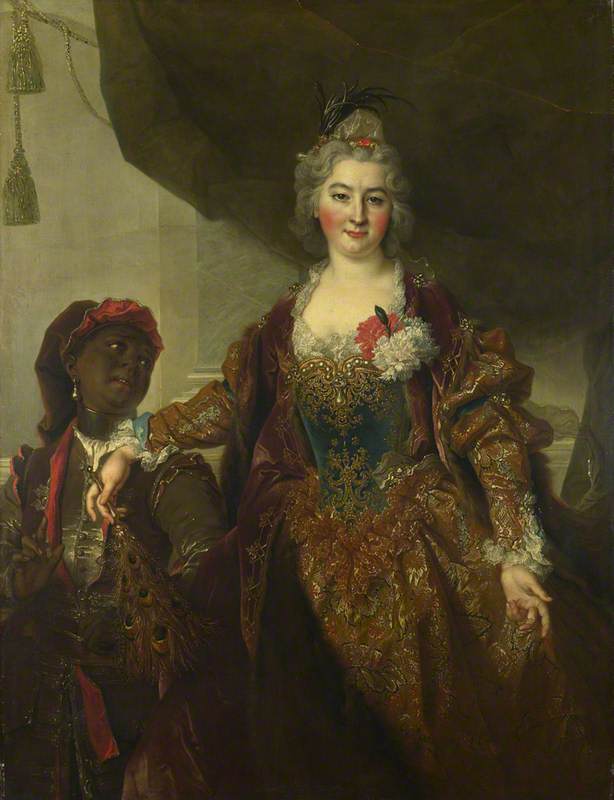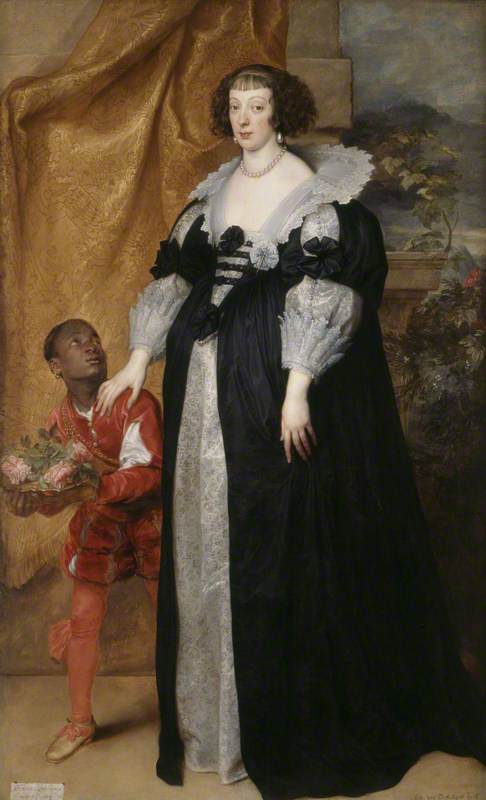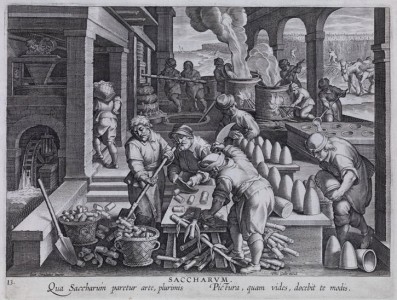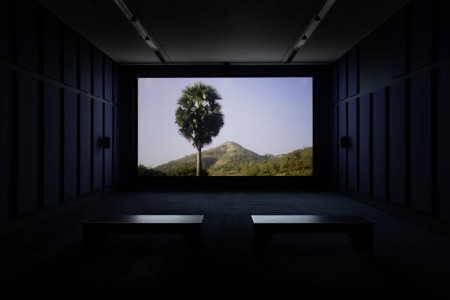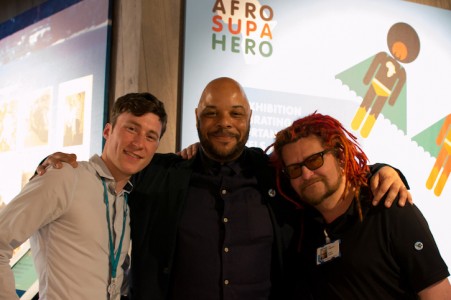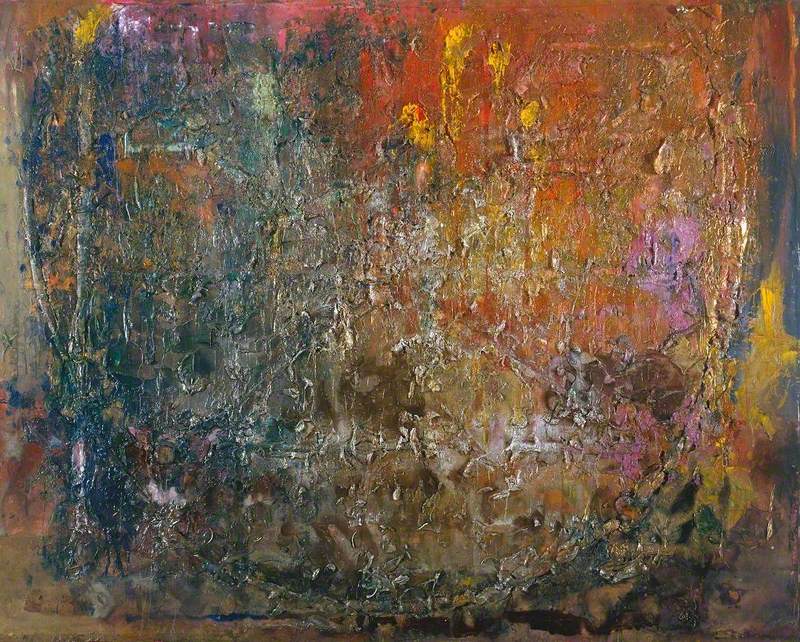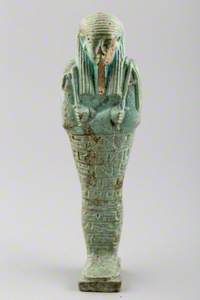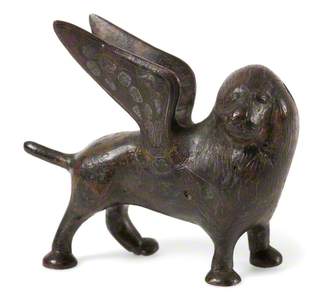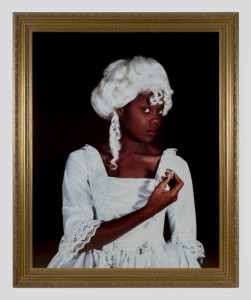Empire, Slavery & Scotland's Museums (ESSM) is a national project dedicated to looking at how museum and collection spaces can address Scotland's involvement with colonialism, empire, and historic slavery.
Seeking to explore the ways in which Scotland can confront its challenging histories, the ESSM steering panel have produced a series of recommendations for museums to better recognise and portray the complex colonial history of Scotland. The project is sponsored by the Scottish Government.
Art UK talked to Abeer Eladany – ESSM Steering Group Member and Curatorial Assistant at the University of Aberdeen Museums – about the importance of such a project.
Members of the Empire, Slavery and Scotland Museums Steering Group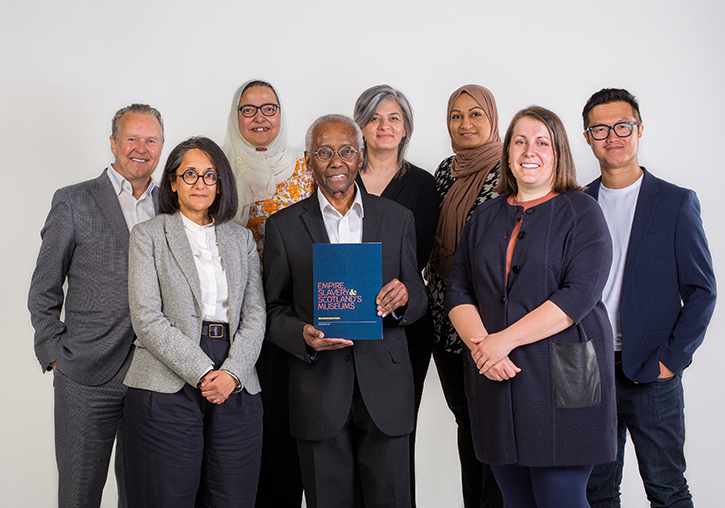
Aimee Murphy, Art UK: How and why did you get involved in the ESSM project?
Abeer Eladany: In October 2020, I was approached by Museums Galleries Scotland asking if I would be interested in joining the steering group. I was told that the project would include a public consultation about museums regarding slavery and empire. When I read the draft terms of service, it became clear that the project is compatible with my views regarding museum ethics. I was excited and felt honoured to be invited to join a group that is tasked with producing recommendations for the Scottish government and for these recommendations to be available for all museums in Scotland.
I have worked for many years in the museum sector in Egypt. I have lived through and seen how colonialism can affect the way a culture is perceived worldwide and how racism shaped the field of Egyptology since its foundation.
We're really pleased to share the new Empire, Slavery & Scotland’s Museums website resource section, with resources suggested and created by those working in the areas of chattel slavery, empire, colonialism and anti-racist practice in museums.https://t.co/Rvurt6cC5B
— MuseumsGalleriesScot (@MuseumsGalScot) July 12, 2021
1/3 pic.twitter.com/VvTztAa4Vq
Aimee: The resources available on the ESSM website can be used to reimagine the museum through a more accurate portrayal of Scotland's colonial past. Can you comment on the importance of looking at collections in this way?
Abeer: I believe museums are there to tell the full history – the complete story – and this is not the current situation. There are certain words and phrases that come up frequently during provenance research, in museum labels and documentation, such as 'turned up' and 'acquired'. These words mask the power balance and were used to hide the true stories about how these objects came to be part of these collections.
Scotland's colonial past is still part of the history of Scotland, and we need to recognise, understand and know all parts of our history: the good, the bad and the parts that we wish had never happened. It is important to look after the museum workforce while they endeavour to untangle these histories as the stories they uncover are often painful and emotional. I hope that the museum sector in Scotland, and beyond, will use and add to these resources as the project develops further.
Low Parks Museum website showing a museum object with provenance information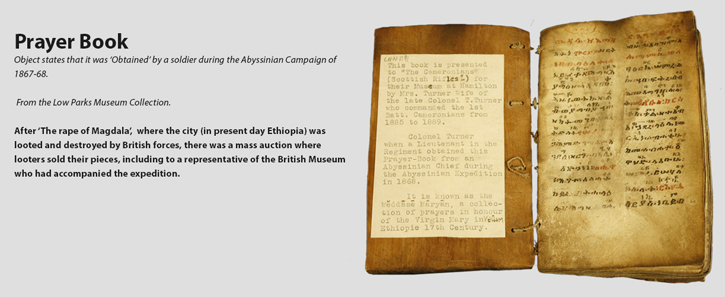
Aimee: Your consultation came to the conclusion that the narratives museums share have a direct relevance to racism today. Can you expand on this?
Abeer: Some museum labels provide an excellent example – such as when you visit an exhibition, and the labels describe any culture as 'primitive' or 'savage'. Keeping these labels on public display is supporting racism. This indicates that it is still acceptable for today's audience to take on the beliefs of the eighteenth century – despite our knowledge that it was such ideologies which underpinned the enslaving of people and many global atrocities.
We need to think of the museum as a human rights institution and embed this thinking in all our procedures.
As an Egyptologist, I see ancient Egypt presented in many museums without a mention of modern Egypt in an attempt to distance the contemporary Egyptians from their own history and culture. How often do you see labels for Egyptian objects written in Arabic to engage the Egyptian communities living locally?!
Shabti (Egyptian Funerary figure)
unknown artist 
Aimee: There seems to be more public focus on repatriation and the histories of the objects held within UK public collections. Why do you think this is important and what response do you hope to receive from the public?
Abeer: I believe that repatriation is one of the first steps towards healing and addressing the feeling of loss that the absence of these objects within their original communities has caused. I remember discussion about how museums in the UK would display absence after repatriation and how museum professionals feel when the objects leave the museum to go back – while for many years, there was no discussion about the feeling of loss and how this affected generations of people who grow up missing these objects.
Rosetta Stone
196 BC, part of a grey and pink granodiorite stela 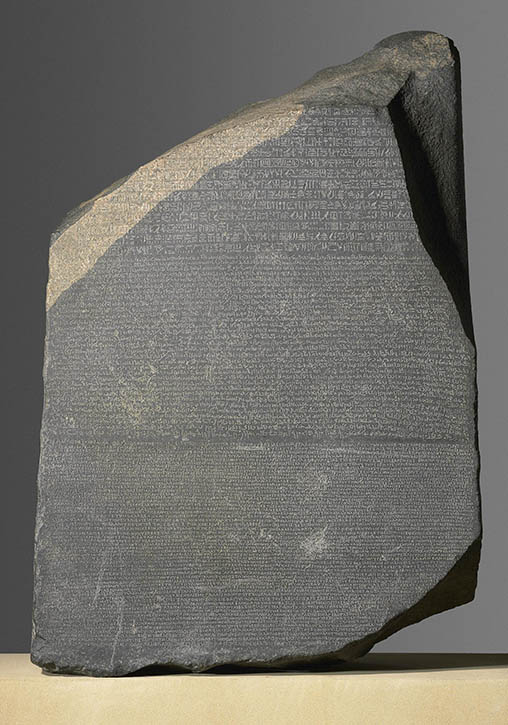
From my personal experience, I grew up in Egypt, studying Egyptology and I only saw the real Rosetta/Rashid Stone during my first visit to the UK when I was 33 years old! I am one of the lucky ones who had the opportunity to travel and see the collection on display at the British Museum. There are millions of Egyptians who do not get this opportunity. Perhaps the question we should be asking is 'how has the loss of this object and others affected generations of Egyptians since it was taken in the early nineteenth century?'
Zahi Hawass, Famed Egyptian archaeologist and former antiquities minister, calls on British Museum to return Rosetta Stone back to Egypt #Bring_The_Rosetta_Stone_Back_to_Egypt pic.twitter.com/fN77pToA4w
— Egyptian History Defenders (@EHD_Group) August 26, 2022
Aimee: Highlighting object histories within exhibition spaces is an important step in recognising and addressing Scotland's complex imperial, colonial and slavery histories. How can collections achieve this, and how do you expect this to alter the visitor experience?
Abeer: We need to start with research. It might be surprising to know that very little is known about the provenance of objects, let alone what they really are or what is actually included in the collections. The research would be used to update the museum databases and would be shared with communities across the world through online open-access channels.
In most museums, very few objects are on display compared to what is in storage. Some labels provide inaccurate, dated and unethical descriptions of the communities where the objects were made. I am using the term 'objects' or 'items' here loosely as these could also be ancestral remains or sacred items.
Aimee: What has been the most interesting thing, in your opinion, to come out of the project so far?
Abeer: I found the views expressed by the young people during the survey very interesting and I believe that museums should listen to young people a lot more. Museum youth forums could provide this link, particularly involving young people with cultural connections to the objects that are housed within museums.
I also found that a change is required regarding the unbalance in the diversity of the sector. Attracting a diverse workforce would massively enrich the interpretation of the collections and would in turn affect the diversity of the audience.
Aimee: What challenges have you faced?
Abeer: There were many challenges and learning opportunities during this project, but almost every one of them has pros and cons. For example, having to attend all the meetings online due to the coronavirus pandemic: having to conduct the discussions virtually must have impacted the team dynamic, especially as it included members from a wide range of backgrounds and expertise. However, it made the process environmentally friendly as no travel was required.
As the only member from the northeast of Scotland, the challenge for me is to make sure the views of the northeast are represented while taking into consideration that the recommendations should be suitable for museums and galleries within the whole of Scotland.
The Empire, Slavery & Scotland’s Museums report is a thoughtful and considered piece of work. We at @HeritageFundSCO will work closely with our partners as Scotland engages with colonialism and historic slavery using its museum collections and museum spaces. https://t.co/02fKXKTUI2
— Caroline Clark (@1CarolineClark) June 14, 2022
Some of the members of the group had been involved at different levels, in related groups locally and had already strong views regarding certain recommendations. Others were introduced to the process for the first time. For example, I felt it was a safe space to voice my views from the start while others listened initially before voicing their own opinions. I think it is the normal process of forming a new team and, in the end, this team delivered the first and largest survey of public attitude towards museums in Scotland.
Some of the discussions we had were very upsetting for many of us, especially for those of us who have lived experience of racism, and this triggered some emotional responses. All this was part of the process and very constructive. I recommend reading the evaluation process as it mentions the challenges in more detail.
Aimee: How do you think this project will change the way museums and galleries are viewed in Scotland?
Abeer: I think this project has already started to change the way museum professionals think about the collections and this will lead to change in the interpretation and the general museum practices in Scotland. I am confident that, if this continues to develop, museums in Scotland will be viewed as institutions that uphold human rights, are honest and present the full truth about our history. This will benefit the whole of society and would build trust in museums, especially from young people. Imagine a society where every person goes to the museum, finds something that represents them and sees their story told.
We're pleased to announce the development phase of the Delivering Change programme, which will support the sector to implement fully equitable, human-rights based approaches to represent previously unheard voices in Scottish museums.
— MuseumsGalleriesScot (@MuseumsGalScot) November 14, 2022
Read more: https://t.co/fvER5yO5ZU
1/3 pic.twitter.com/zmctwin57H
I hope there is a permanent change to the way museums in Scotland tell stories about objects and how they were collected. We can see there are already projects that aim to change the narrative, such as Delivering Change, informed in part by research conducted during the ESSM project which indicated a need for museums to adopt an anti-racist approach. We also see reference to the project in Scotland's Museums and Galleries Strategy (2023–2030).
Today marks the launch of Scotland’s museums and galleries strategy for 2023 to 2030. Developed by and for the Scottish museum sector, it sets out how we can work together to create valued, inclusive, and enterprising spaces. You can read it online at: https://t.co/KGOsEybUxZ 1/2 pic.twitter.com/V6h4Qj29s5
— MuseumsGalleriesScot (@MuseumsGalScot) February 2, 2023
There is also a huge increase in repatriation cases from Scottish museums and an overall positive public reaction to these cases.
There have been exhibitions co-curated by members of the community which discuss and challenge historic power imbalances within the museums and the wider community.
There will be more exhibitions, repatriations and documentation projects that will reveal some painful truths about the past, but I am sure there will also be healing – and connections forged with communities within Scotland and globally. Watch this space!
Aimee Murphy, Collections Engagement Officer at Art UK
